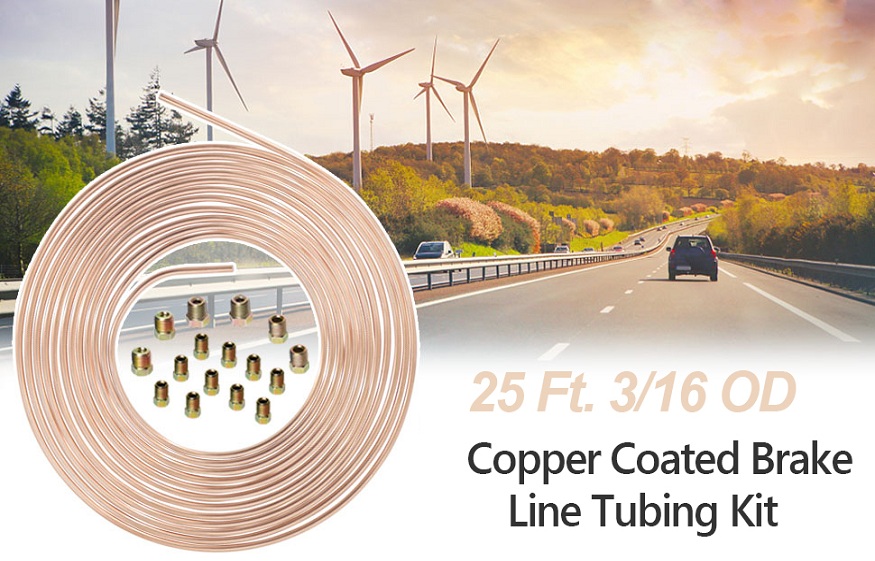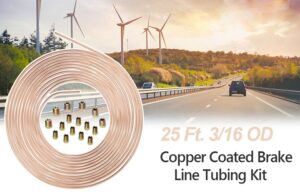Why 3/16 Brake Lines Are the Industry Standard for Heavy-Duty Vehicles

If you’re an avid car enthusiast, mechanic, or classic car restorer, then you’ve probably noticed the prevalence of 3/16-inch brake lines. They’re literally everywhere, and with good reason; they’ve turned into some sort of a gold standard for heavy-duty vehicles, fittingly combining the acids of reliability, efficiency, and versatility in one. Why are they used so widely? And what makes them so effective? Now let’s peer a little closer into the world of brake line tubing, fittings, and flaring tools to find the right answer.
The Backbone of Brake Systems
Brake lines are the unsung heroes of your vehicle’s braking system: they carry hydraulic brake fluid that powers your brakes and makes sure that your car stops safely when you press the pedal. Material, size, and type of fitting are literally matters of life and death for these lines. That’s where 3/16″ brake lines come in.
Why 3/16? Because this size is an ideal combination of strength and flexibility: small enough to route easily through heavy-duty vehicle chassis, yet strong enough to handle high pressure that may be needed from braking systems.
Why Heavy-Duty Vehicles Rely on 3/16 Brake Lines?
Heavy-duty vehicles need powerful braking systems to stop massive loads safely. With 3/16 brake lines, you get consistent hydraulic pressure and quick response times. Their design ensures that they can handle the demands of frequent braking without failure.
Additionally, these brake lines are compatible with inverted flare fittings, a common choice in automotive applications. These fittings provide a secure, leak-proof connection, which is crucial when dealing with high-pressure brake systems. Whether you’re using a brake line flaring tool or connecting brake line fittings, the 3/16 size ensures compatibility across a wide range of components.
The Role of Brake Line Clips in Maintaining Performance
Routing brake lines in a vehicle isn’t just about choosing the right tubing size—it’s also about securing those lines properly. That’s where brake line clips come in. These small but essential parts keep your 3/16 brake lines firmly in place, preventing vibrations, wear, and potential failure.
For heavy-duty vehicles, which often face rough terrains and heavy use, having well-secured brake lines is critical. Brake line clips are classic cars parts that not only ensure safety but also contribute to the overall longevity of your braking system.
Restoring Classic Cars? Stick with 3/16 Brake Lines
If you’re working on restoring classic cars, you’ll quickly find that 3/16 brake lines are a staple. Many vintage vehicles originally used this size, making it the go-to choice for authenticity. Plus, it pairs seamlessly with classic inverted flare fittings, ensuring that your restoration is both functional and true to the original design.
Classic cars also often require custom routing of brake lines. With the flexibility of 3/16 tubing, coupled with the precision provided by a quality brake line flaring tool, you will be able to fabricate brake lines that will fit precisely in your restoration project.
Selecting the Proper Tools and Materials
Working with 3/16-inch brake lines, the right tools come in quite handy. First, a good brake line flaring tool ensures that your lines have the appropriate flares to fit securely into the brake line fittings. You can’t afford to have improper flares since these may cause leaks and less braking efficiency, which you can’t afford on a heavy-duty vehicle or classic car.
Similarly, high-quality brake line fittings are a necessity. The fittings create the connection between your brake lines and the remainder of the braking system; therefore, durability and precision are non-negotiable.
Why 3/16 Brake Lines Are Here to Stay?
The 3/16-inch brake line has become quite an industrial standard for use in heavy-duty and classic cars. This size is ideal because of its strength and adaptability to support other components, such as brake line clips and inverted flare fittings, making it a common size for a wide array of uses.
Understanding the importance of 3/16″ brake lines and the right tools, like a brake line flare tool, will go a long way to making projects safe, reliable, and built to last. Be they for a professional mechanic or a hobbyist restoring vintage beauties.
So, the next time you’re under the hood or restoring a classic car part, remember: those slim 3/16 brake lines aren’t just there by chance—they’re the backbone of a well-functioning brake system.





